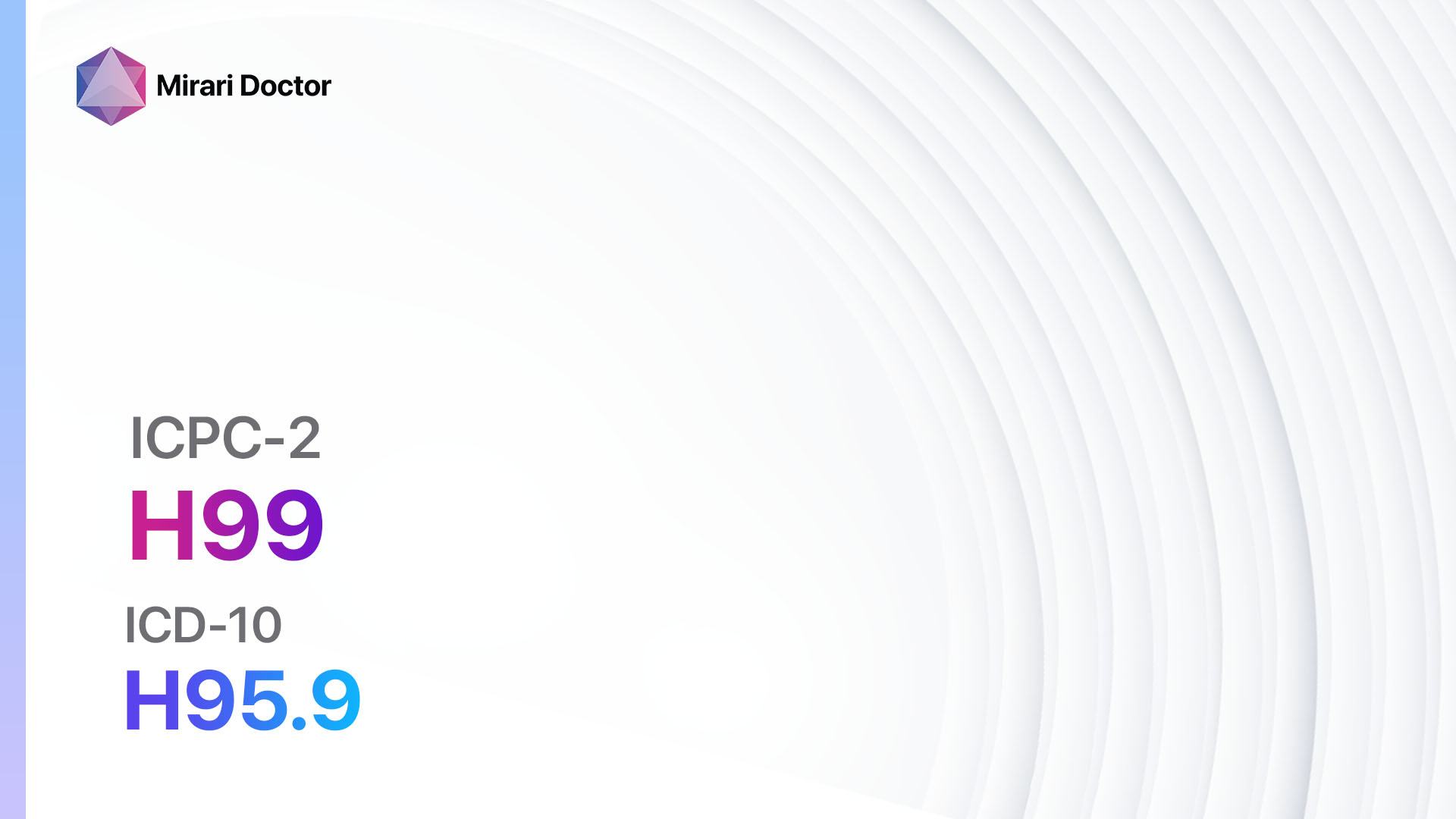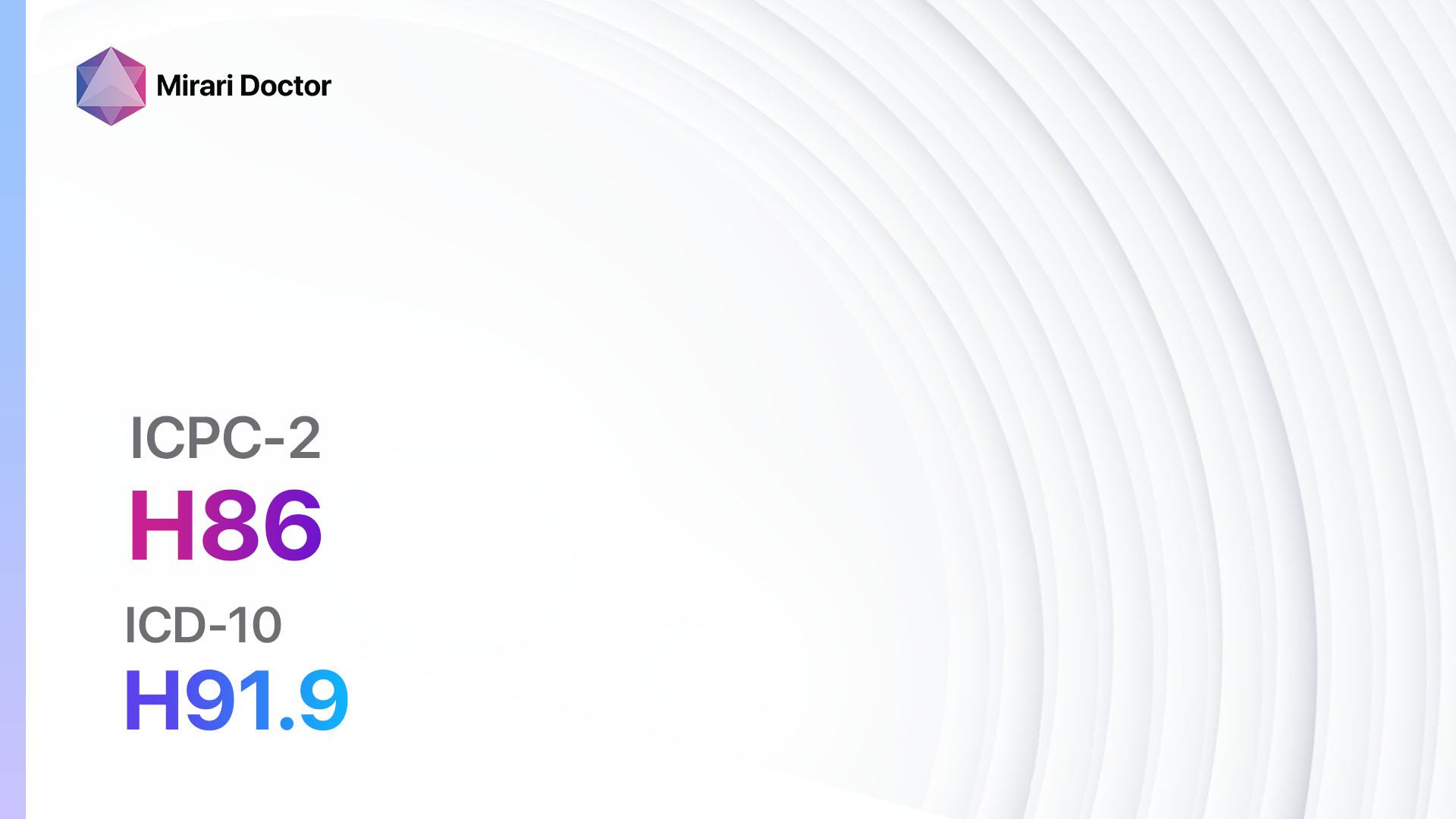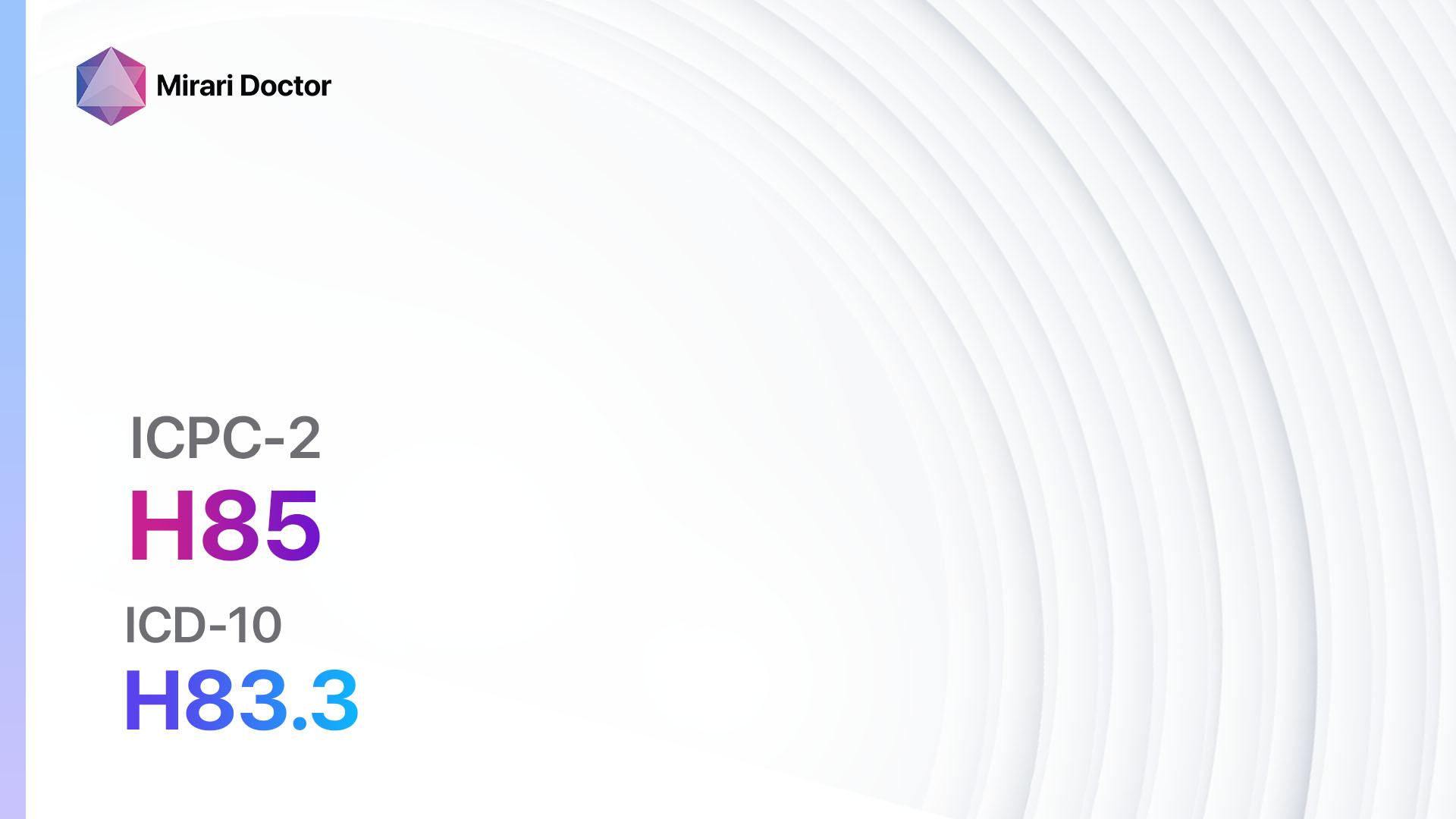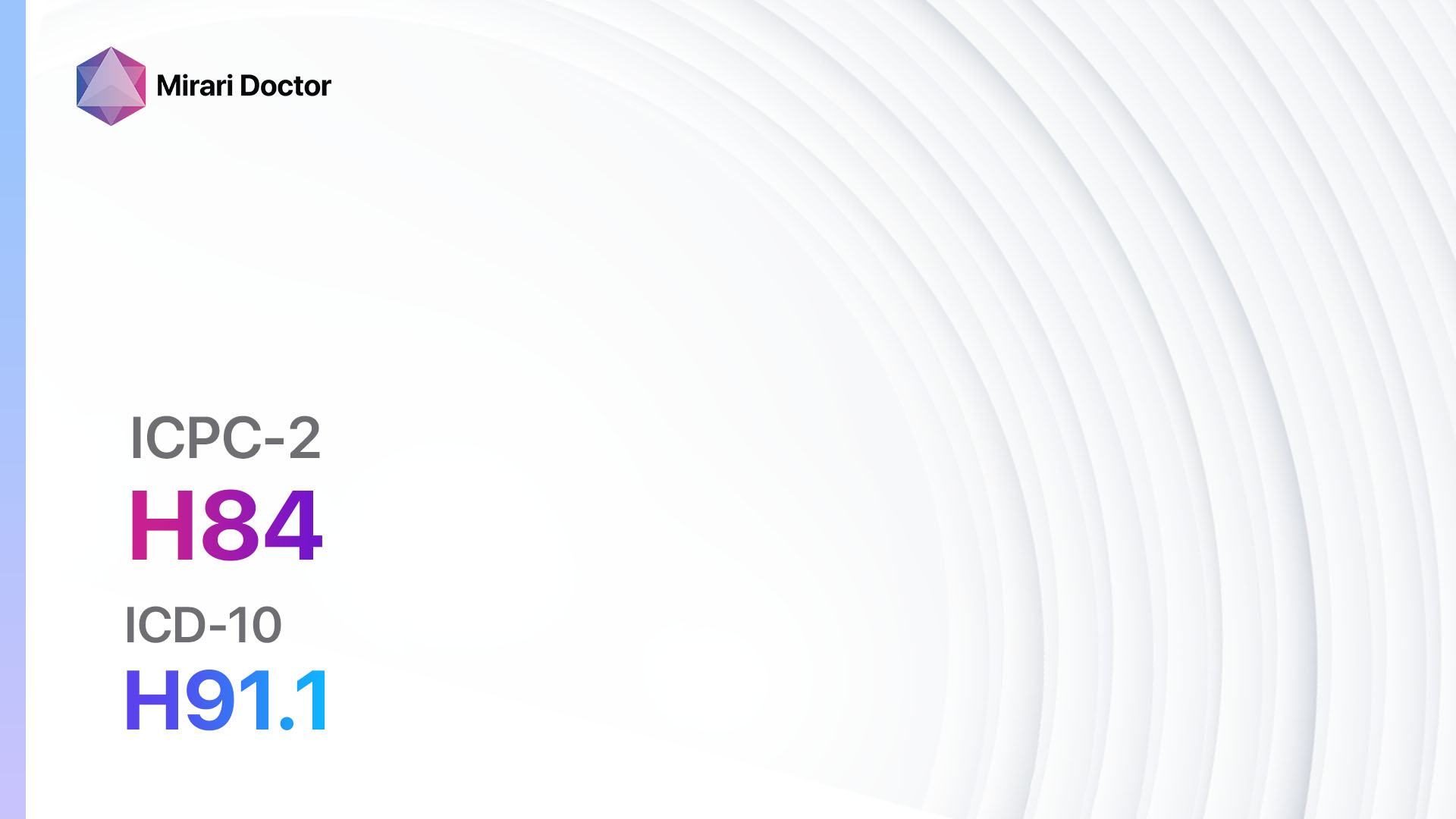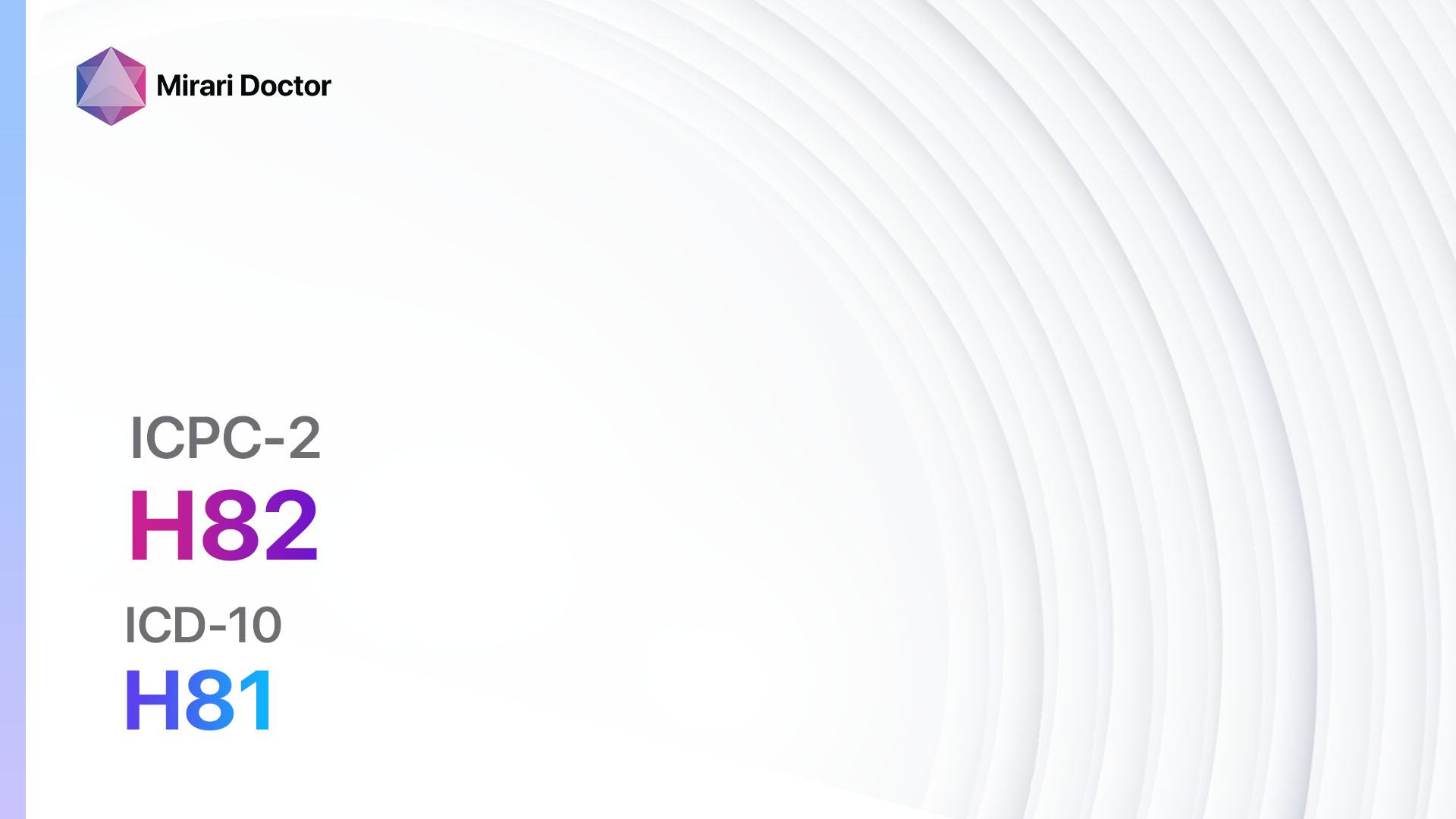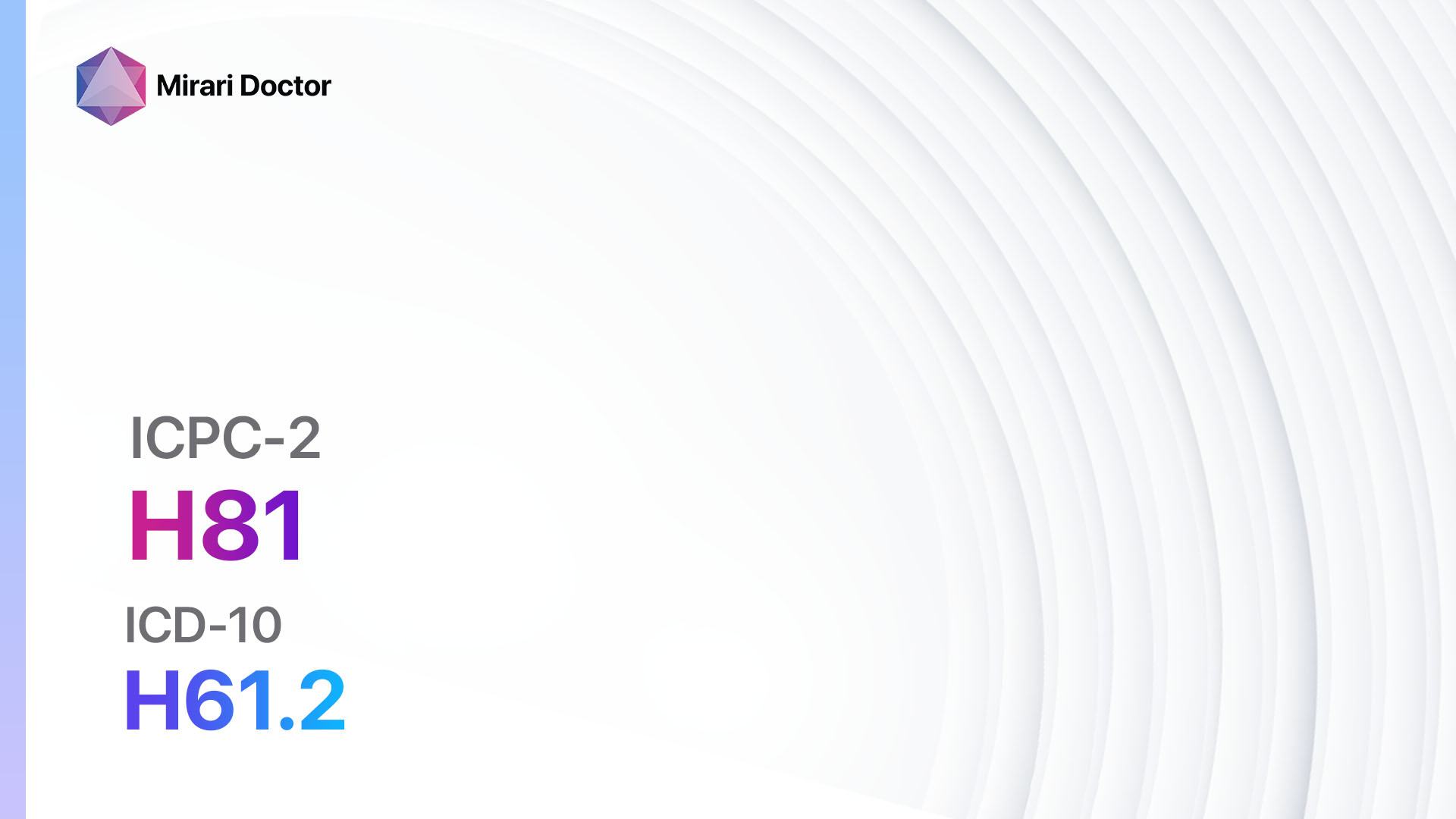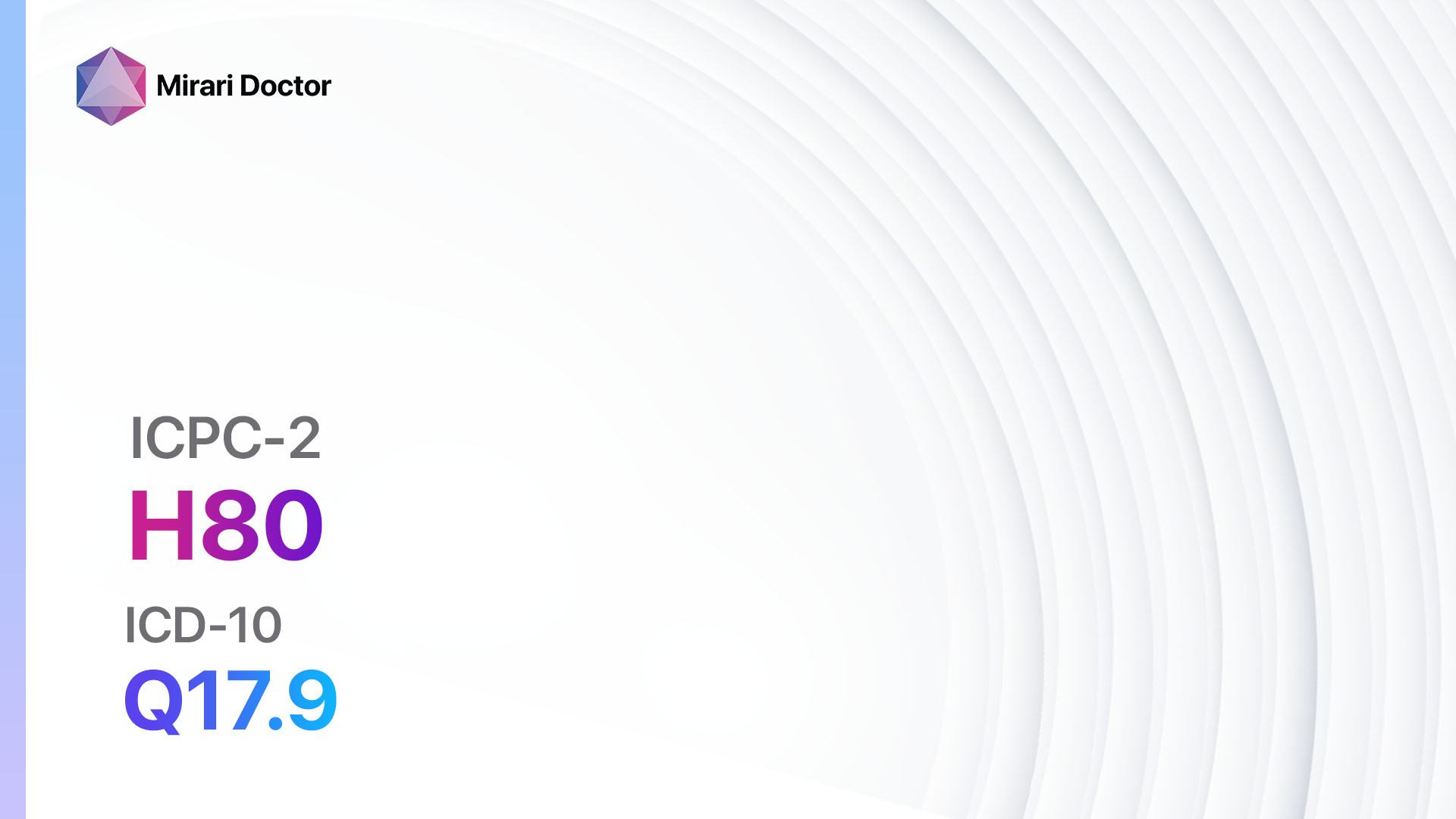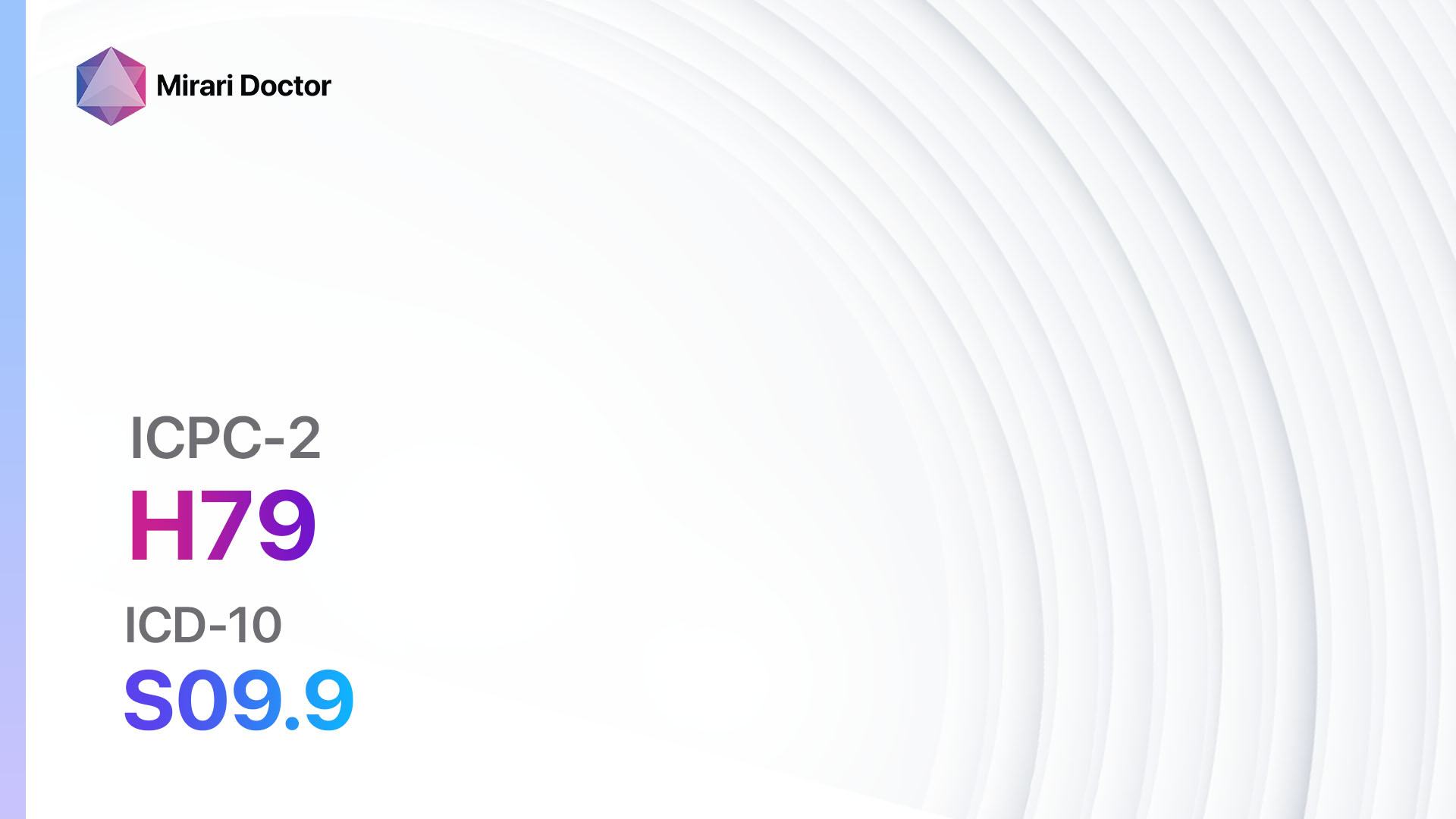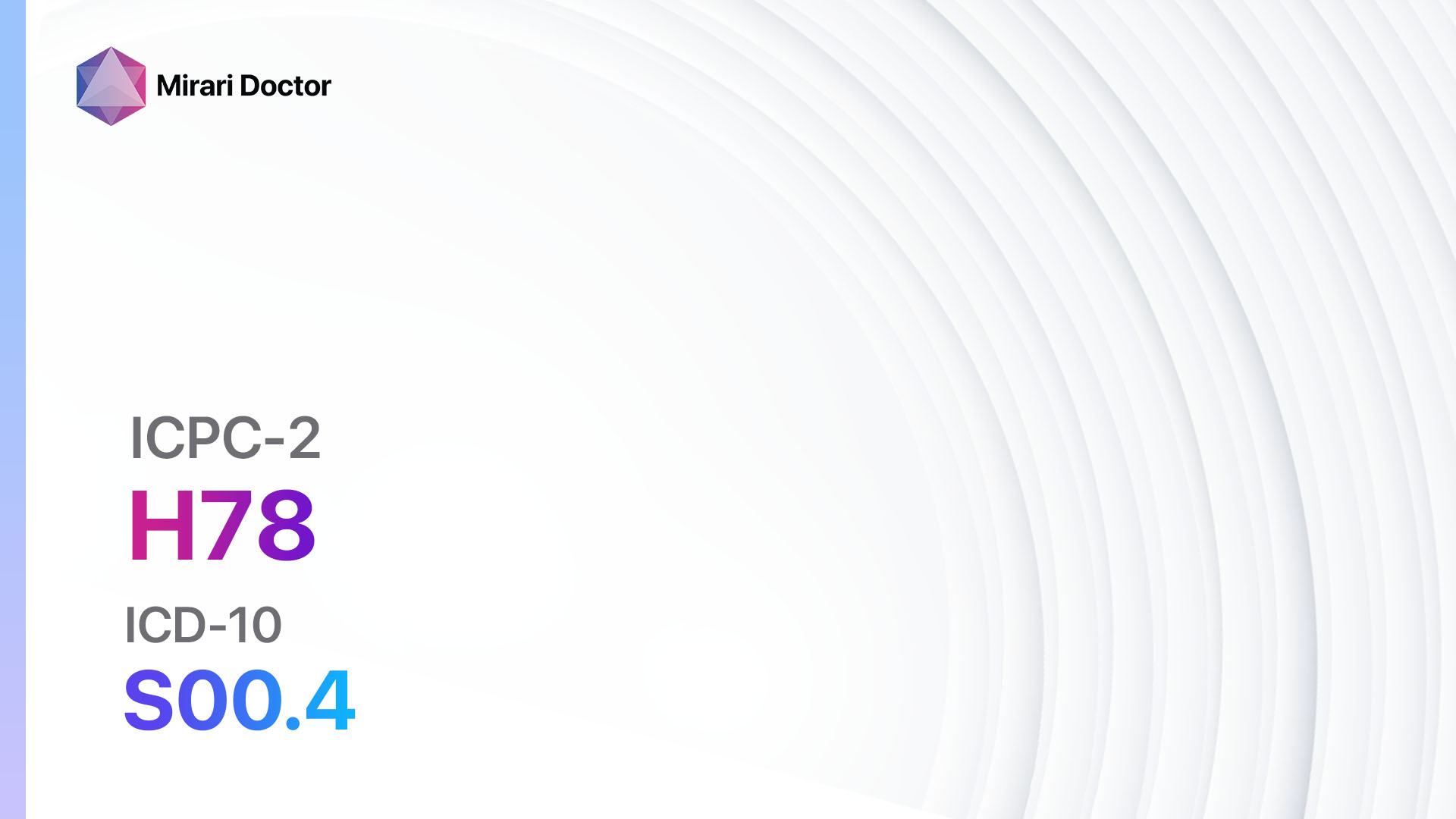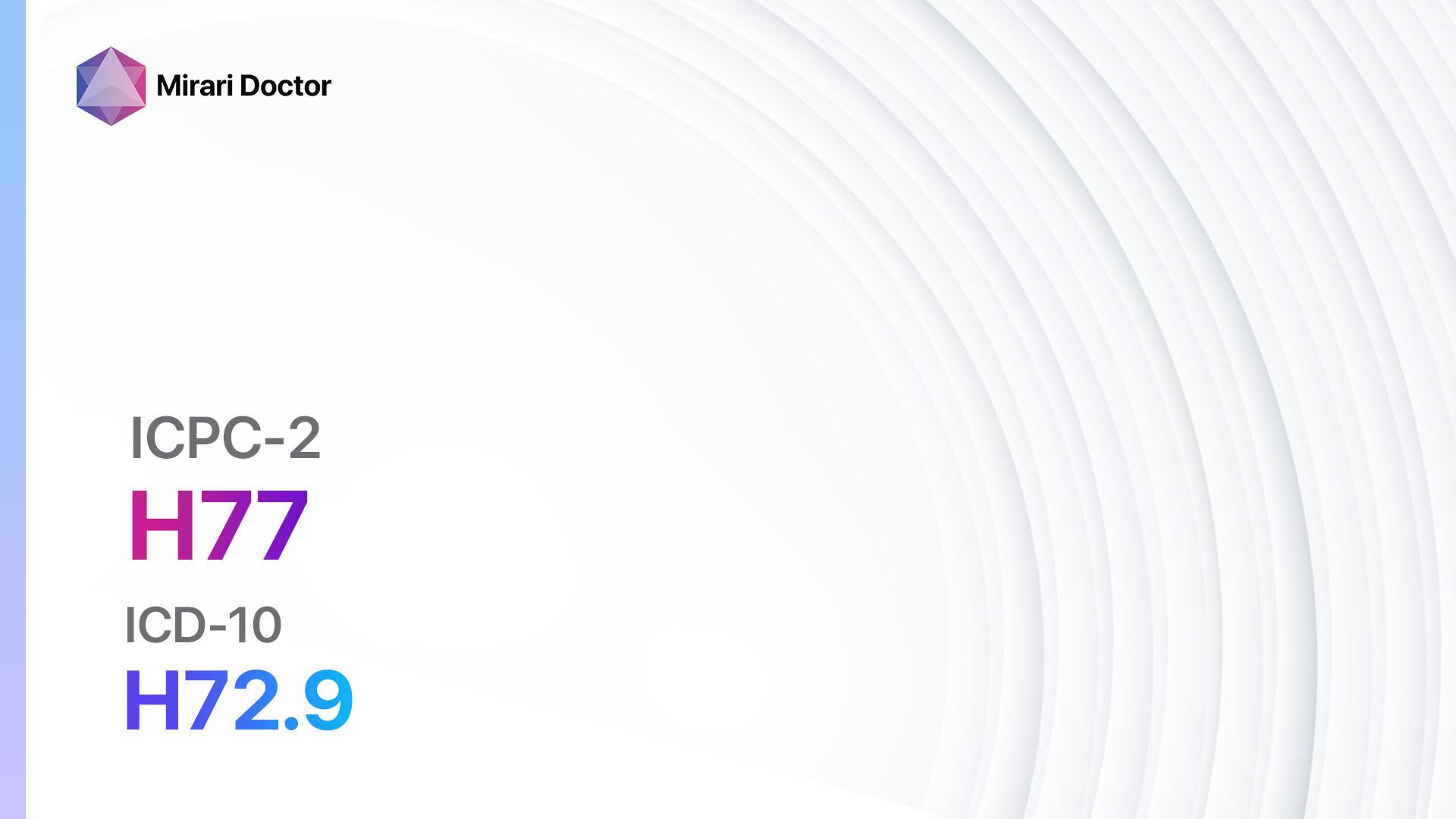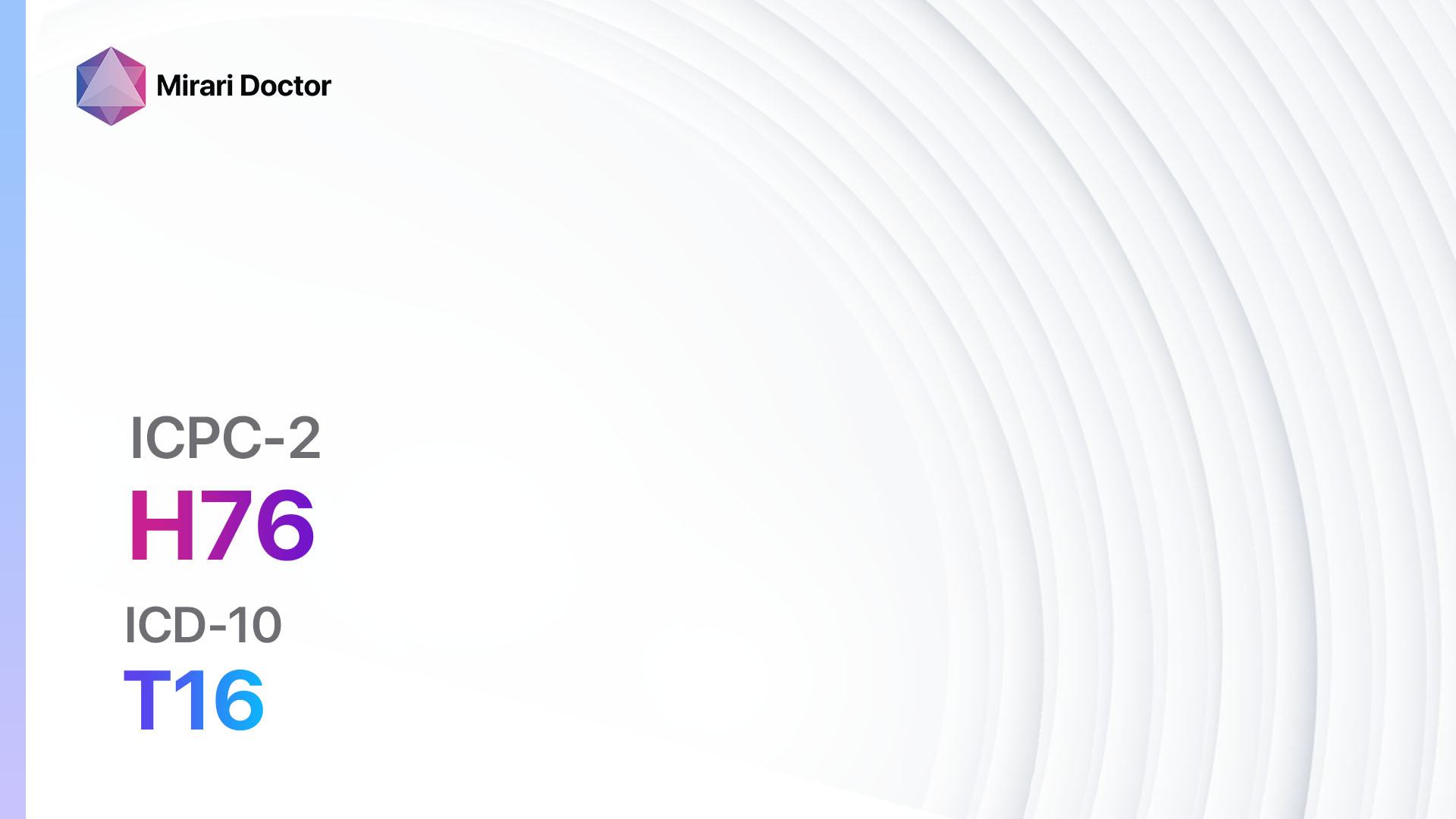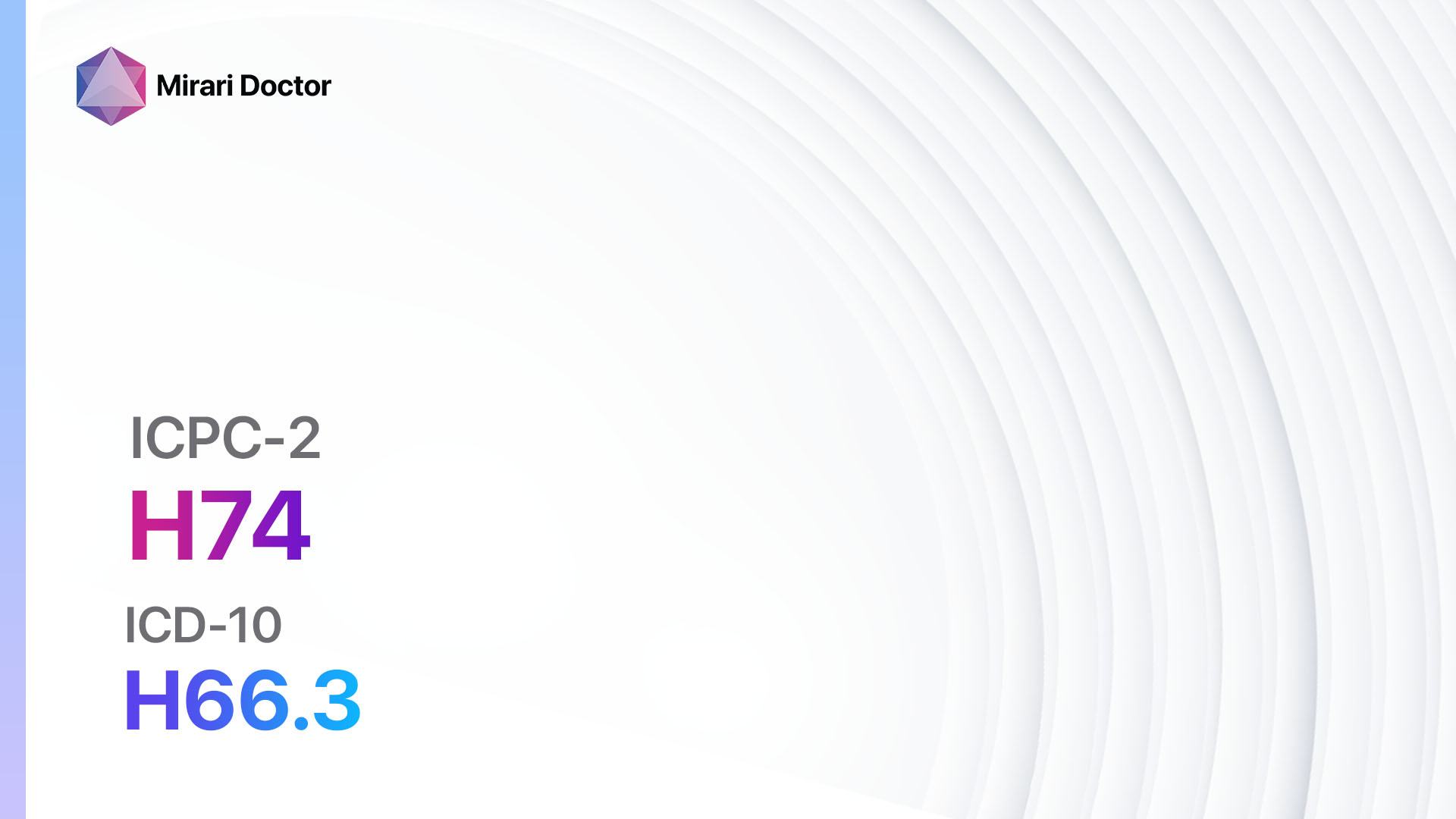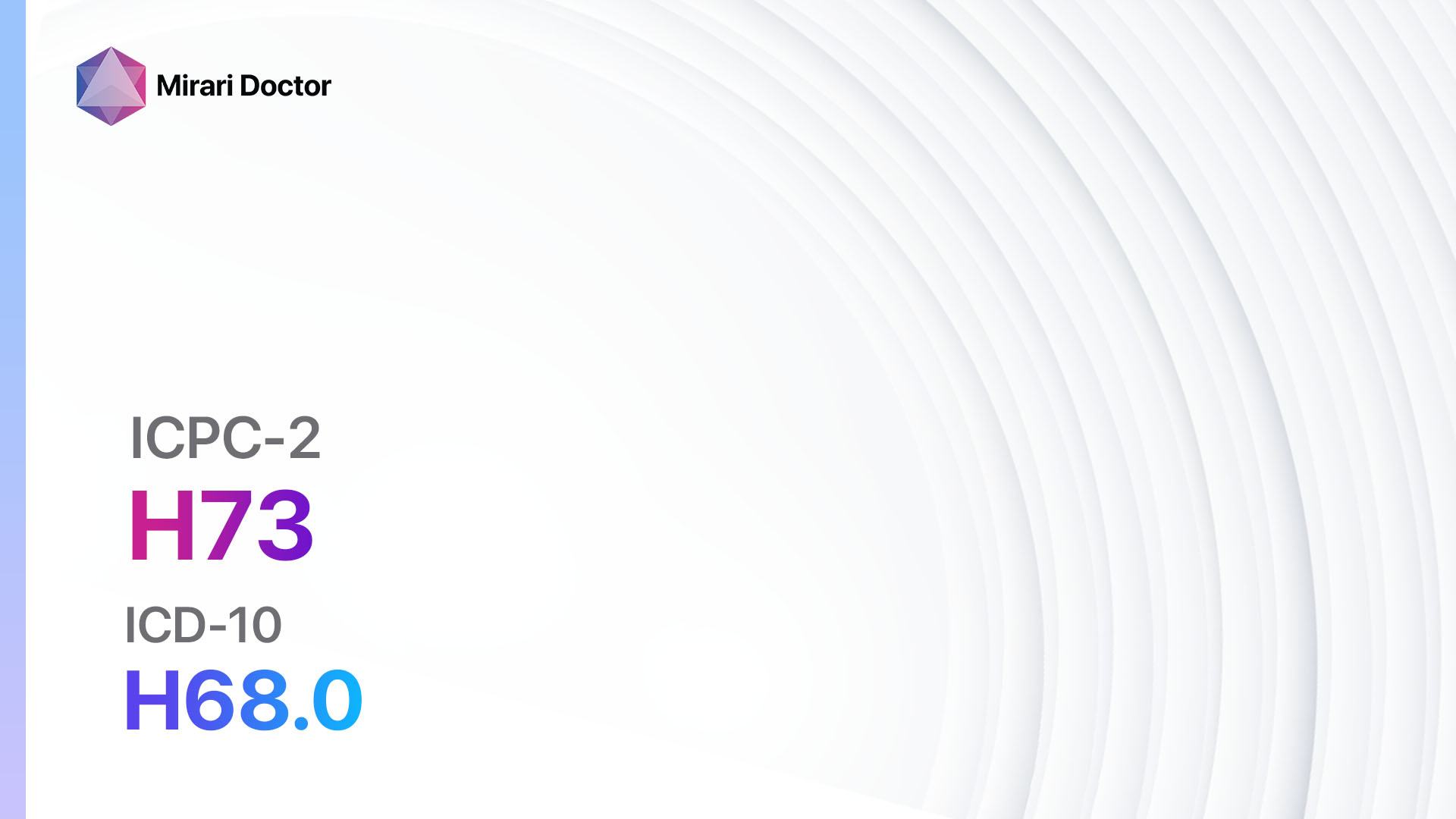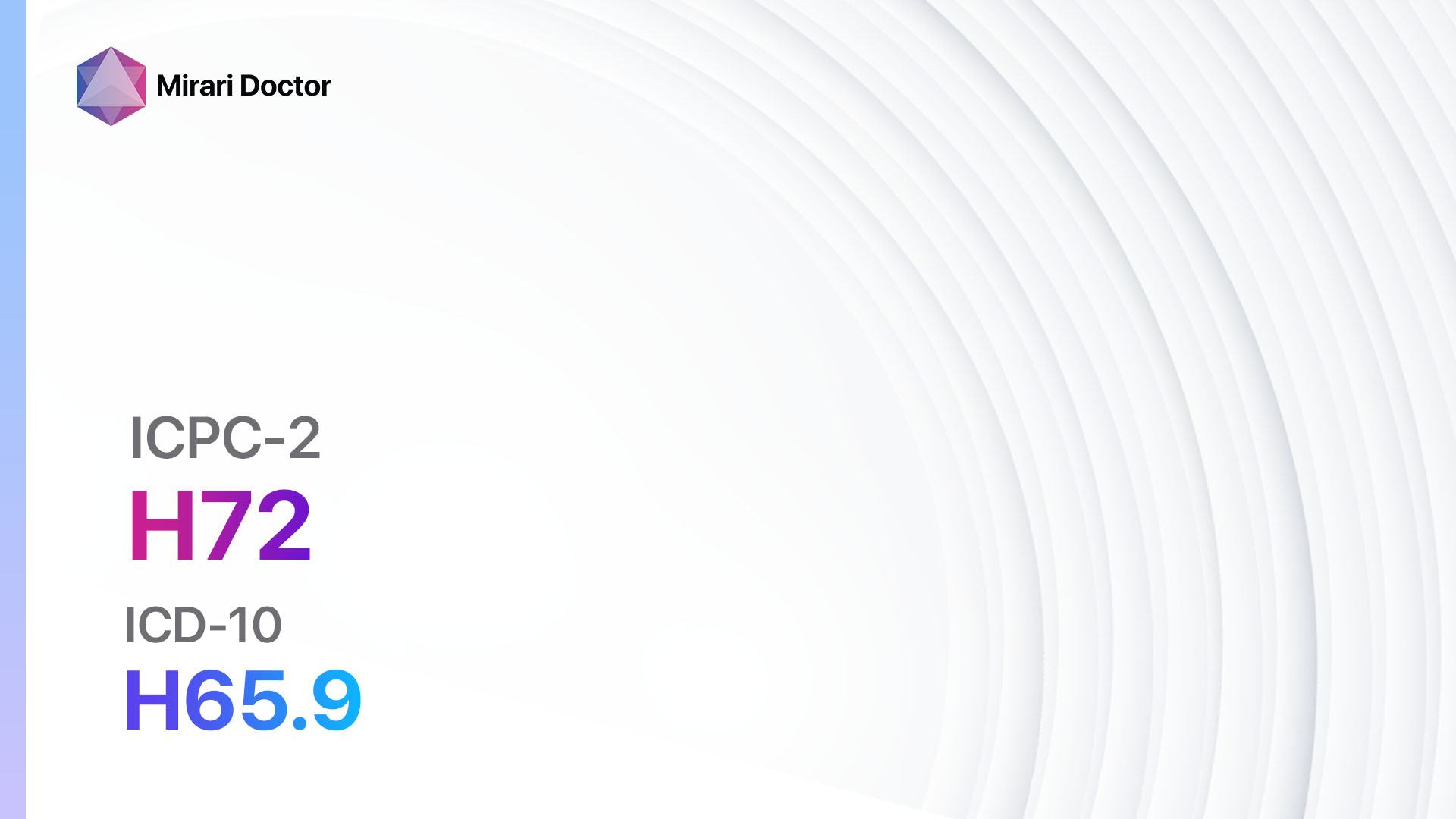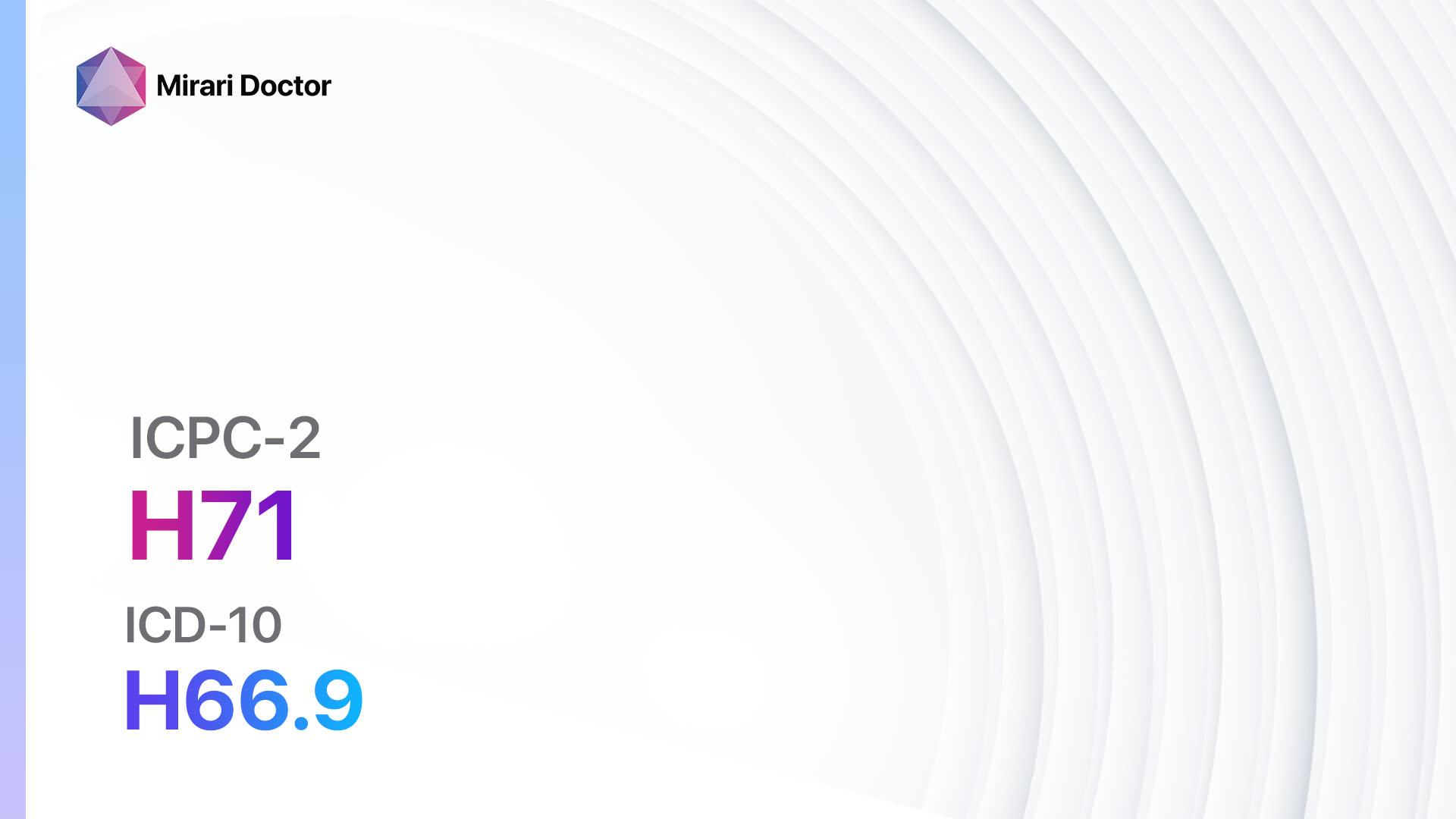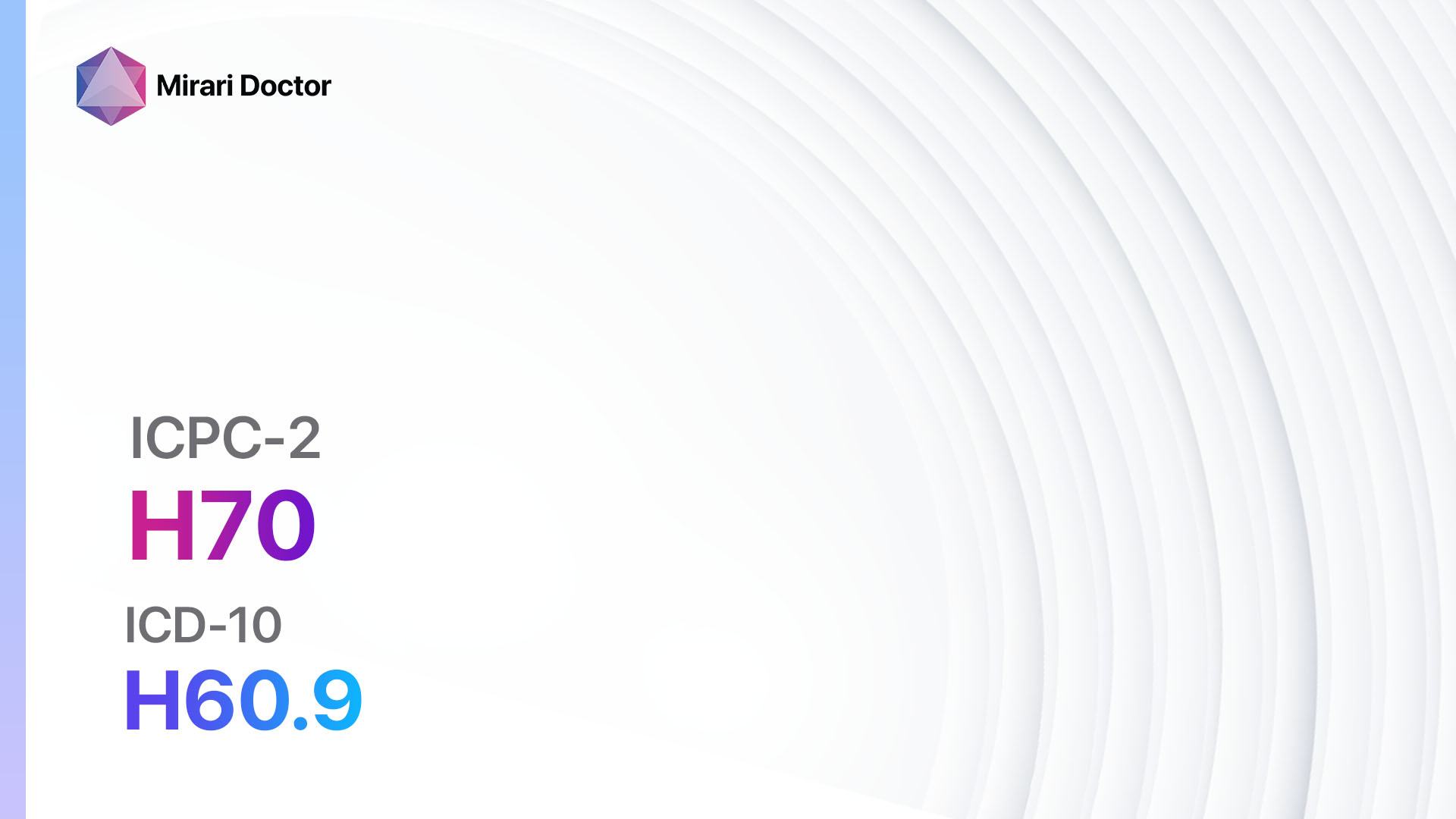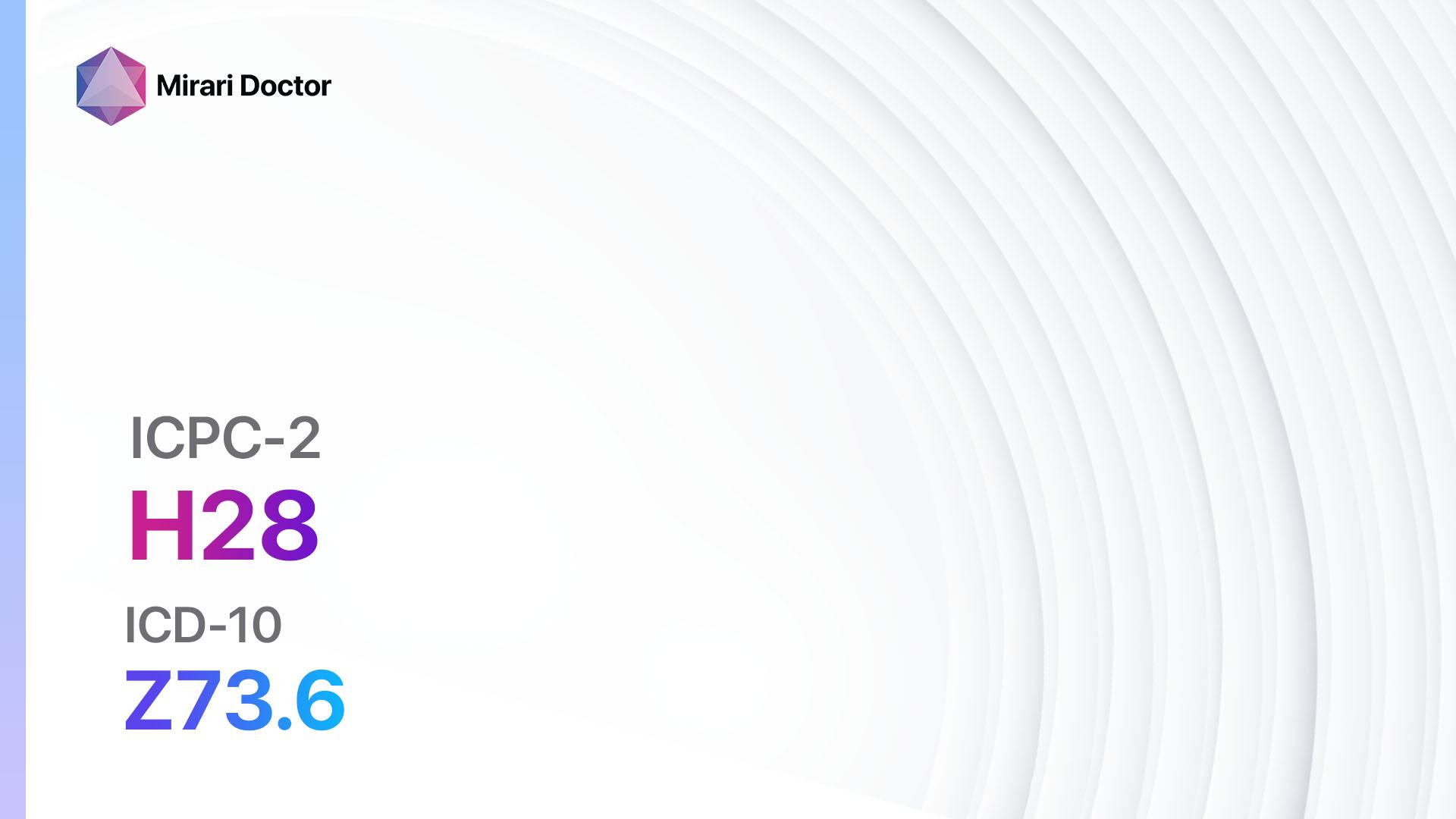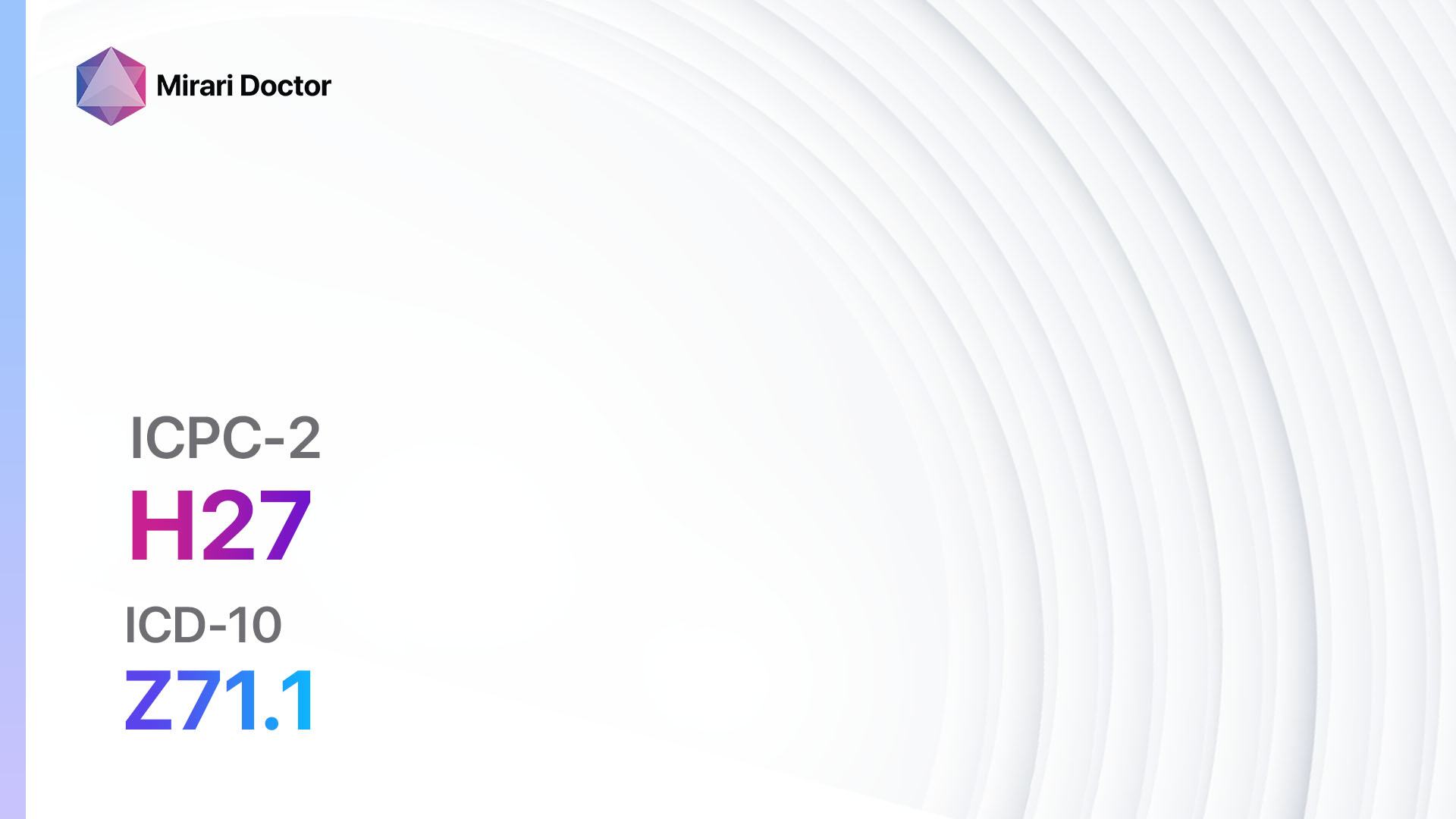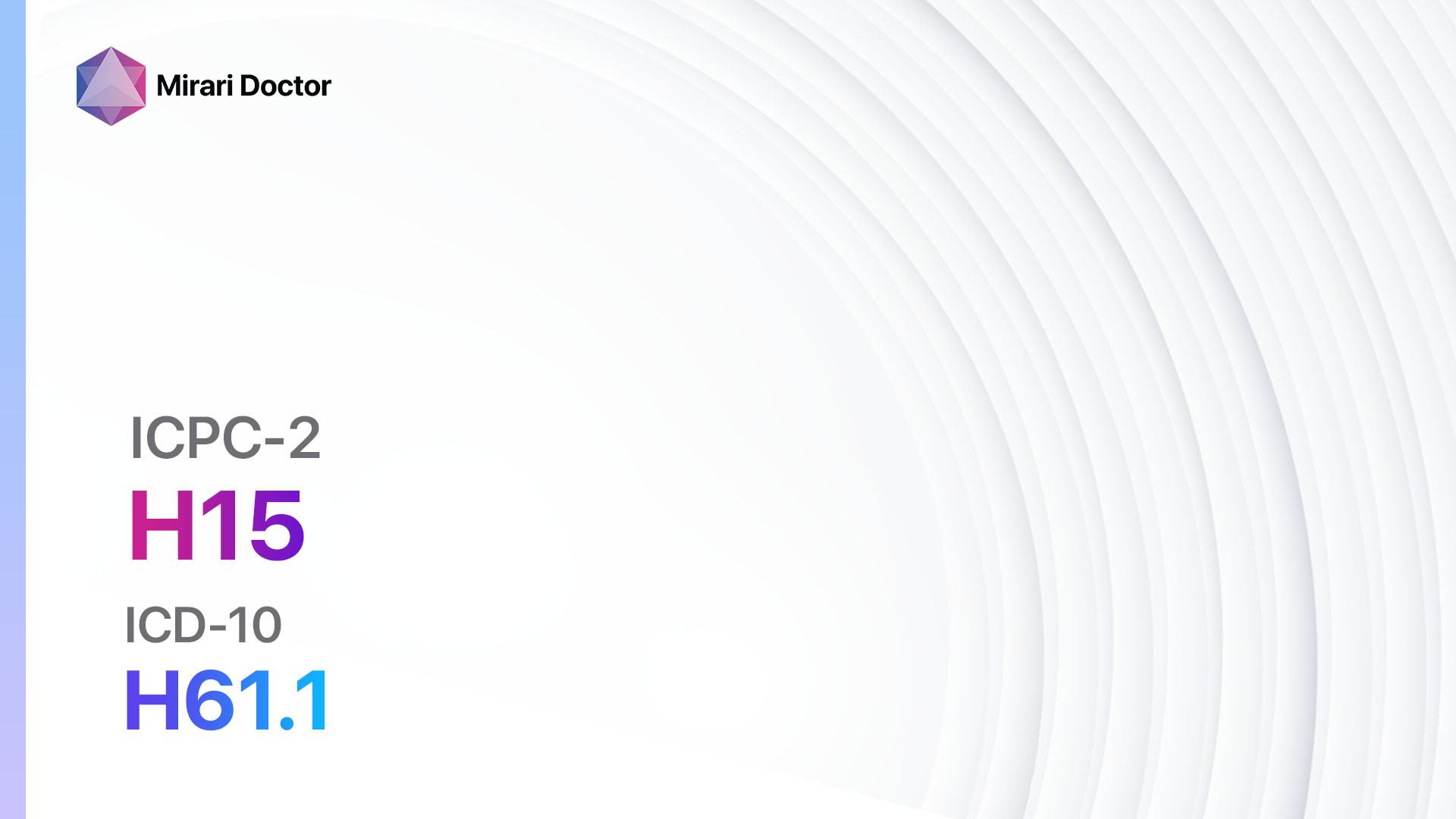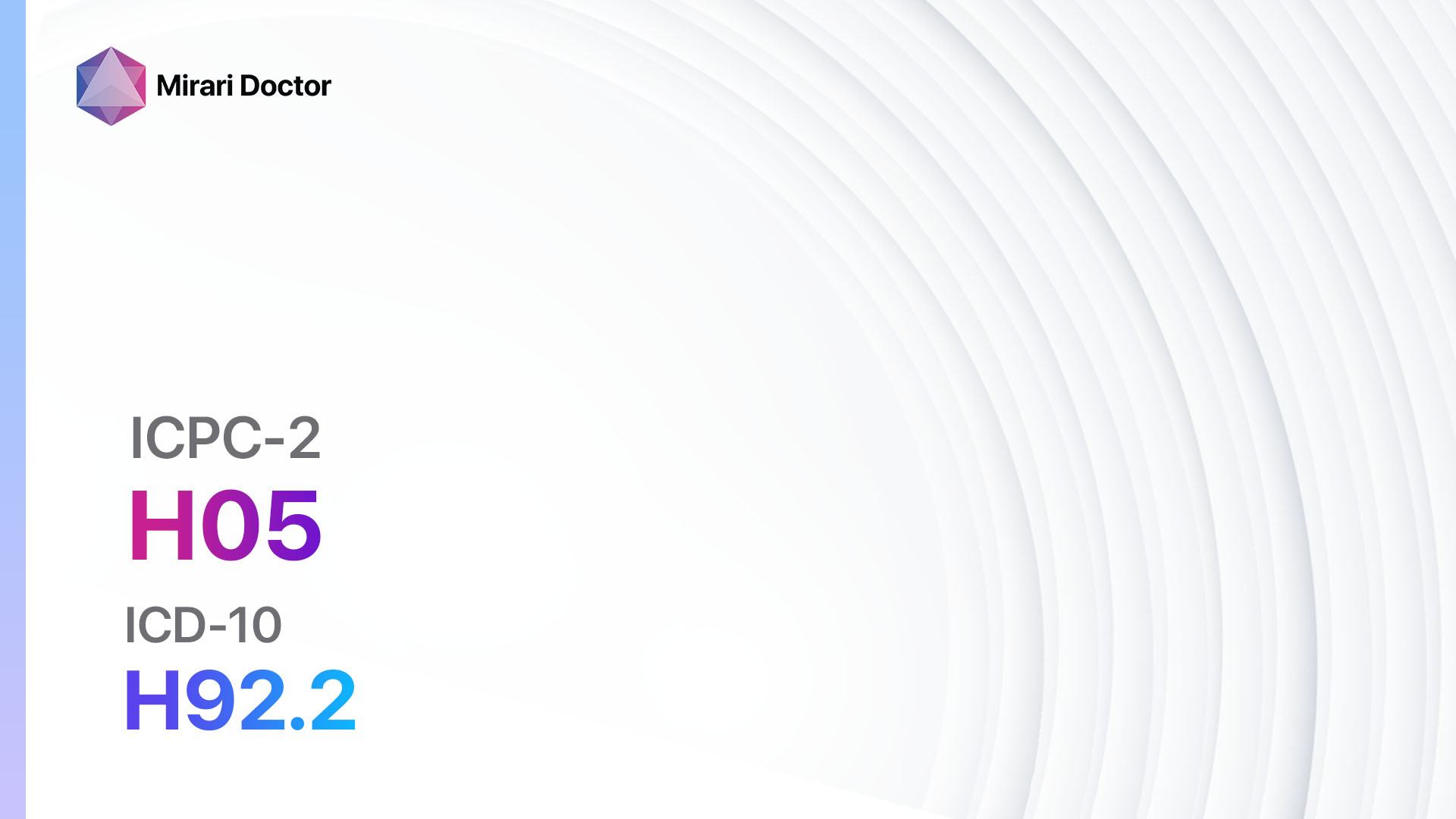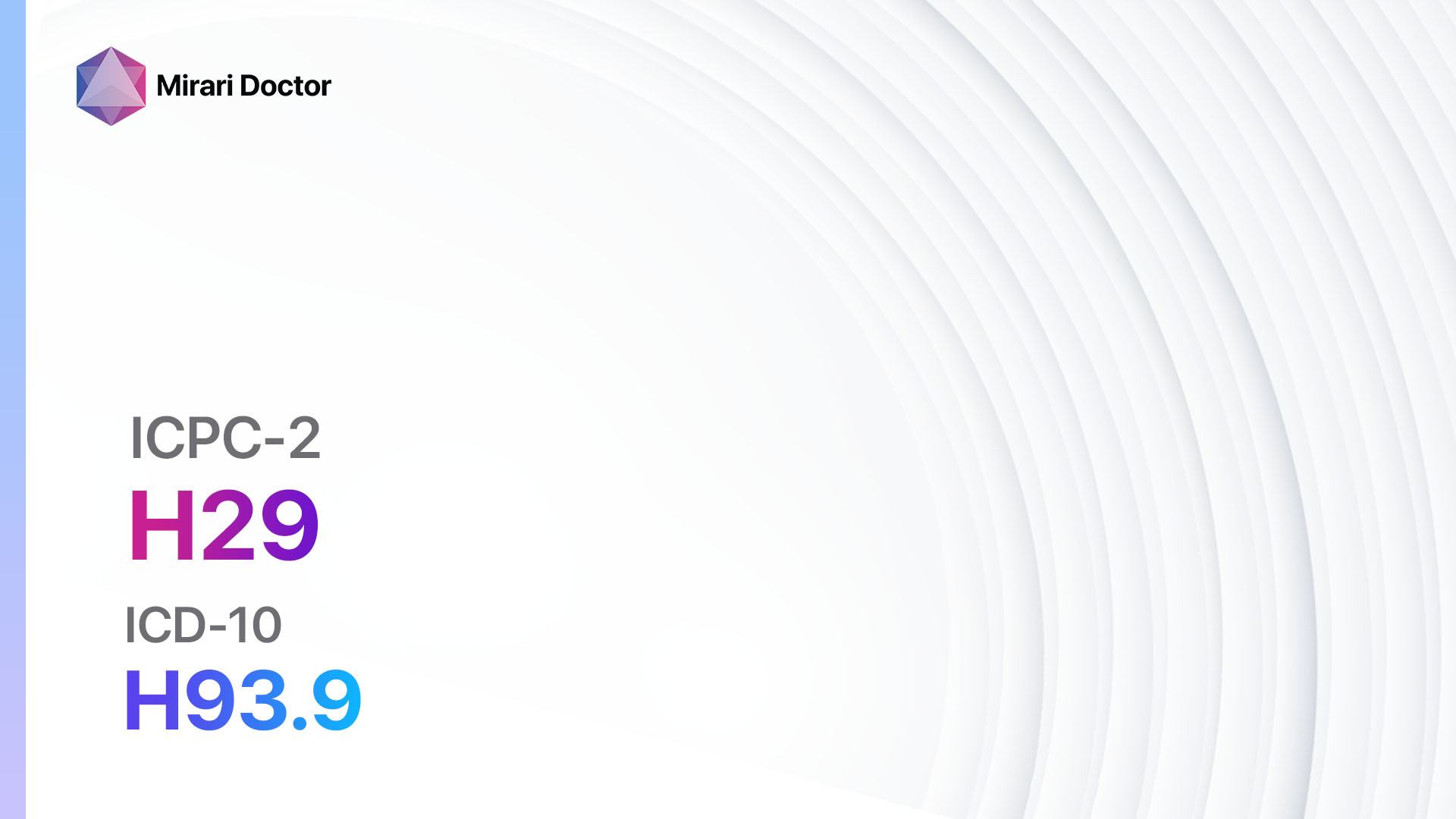
Introduction
Ear symptoms or complaints can encompass a wide range of conditions affecting the ear, such as pain, itching, discharge, or hearing loss[1]. These symptoms can be caused by various factors, including infections, allergies, trauma, or underlying medical conditions[2]. The aim of this guide is to provide an overview of the diagnostic steps, possible interventions, and lifestyle modifications that can be considered for managing ear symptoms or complaints.
Codes
Symptoms
- Ear pain: Aching or sharp pain in the ear.
- Itching: Persistent itching sensation in the ear.
- Discharge: Abnormal fluid or pus draining from the ear.
- Hearing loss: Partial or complete loss of hearing one or both ears[5].
Causes
- Ear infection: Bacterial or viral infection of the ear.
- Allergies: Allergic reactions to substances, such as pollen or pet dander.
- Trauma: Injury or damage to the ear, such as from a blow or loud noise.
- Wax buildup: Excessive accumulation of earwax.
- Eustachian tube dysfunction: Impaired function of the Eustachian tube, which can lead to pressure changes in the ear.
- Foreign body: Presence of a foreign object in the ear.
- Tinnitus: Ringing or buzzing sensation in the ear[6].
Diagnostic Steps
Medical History
- Gather information about the patient’s symptoms, including the duration, severity, and any associated factors.
- Inquire about any previous ear infections, allergies, or trauma.
- Ask about any medications or treatments the patient has tried for their symptoms.
- Assess the patient’s medical history for any underlying conditions that may contribute to ear symptoms, such as diabetes or autoimmune disorders[7].
Physical Examination
- Inspect the external ear for any signs of redness, swelling, or discharge.
- Examine the ear canal using an otoscope to check for wax buildup, foreign objects, or signs of infection.
- Perform a hearing test to assess the patient’s hearing ability.
- Palpate the area around the ear to check for tenderness or swelling.
- Evaluate the patient’s balance and coordination, as ear symptoms can sometimes be associated with vestibular dysfunction[8].
Laboratory Tests
- Complete blood count (CBC): To check for signs of infection or inflammation.
- Culture and sensitivity test: If there is discharge from the ear, a sample may be collected and sent to the laboratory to identify the causative organism and determine the appropriate antibiotic treatment.
- Allergy testing: If allergies are suspected, skin prick tests or blood tests may be performed to identify specific allergens[9].
Diagnostic Imaging
- X-ray: May be used to assess the bony structures of the ear, such as in cases of trauma or suspected fractures.
- CT scan: Provides detailed images of the ear structures and can help identify abnormalities or infections.
- MRI: Useful for evaluating soft tissues and detecting tumors or other abnormalities in the ear[10].
Other Tests
- Tympanometry: Measures the movement of the eardrum in response to changes in air pressure, helping to assess middle ear function.
- Audiometry: Determines the patient’s hearing thresholds and can identify the type and degree of hearing loss.
- Vestibular testing: Evaluates the function of the inner ear and vestibular system, which can be helpful in cases of dizziness or balance problems.
Follow-up and Patient Education
- Schedule a follow-up appointment to review test results and discuss treatment options.
- Provide education on proper ear hygiene, including the safe removal of earwax and prevention of infections.
- Discuss lifestyle modifications and interventions that may help manage symptoms.
Possible Interventions
Traditional Interventions
Medications:
Top 5 drugs for Ear symptom/complaint other:
- Antibiotics (e.g., Amoxicillin, Ciprofloxacin):
- Cost: Generic versions can be $3-$50/month.
- Contraindications: Allergy to antibiotics, history of tendonitis or tendon rupture.
- Side effects: Nausea, diarrhea, rash.
- Severe side effects: Severe allergic reactions, Clostridium difficile infection.
- Drug interactions: Warfarin, oral contraceptives.
- Warning: Complete the full course of antibiotics as prescribed.
- Antihistamines (e.g., Loratadine, Cetirizine):
- Cost: Generic versions can be $5-$20/month.
- Contraindications: Allergy to antihistamines, narrow-angle glaucoma.
- Side effects: Drowsiness, dry mouth, blurred vision.
- Severe side effects: Irregular heartbeat, difficulty urinating.
- Drug interactions: Sedatives, alcohol.
- Warning: Avoid activities requiring mental alertness while taking antihistamines.
- Decongestants (e.g., Pseudoephedrine, Phenylephrine):
- Cost: Generic versions can be $5-$15/month.
- Contraindications: Severe hypertension, coronary artery disease.
- Side effects: Increased heart rate, elevated blood pressure, insomnia.
- Severe side effects: Seizures, hallucinations.
- Drug interactions: MAO inhibitors, beta-blockers.
- Warning: Limit use to short-term relief, as long-term use can lead to rebound congestion.
- Corticosteroids (e.g., Prednisone, Fluticasone):
- Cost: Generic versions can be $5-$30/month.
- Contraindications: Active infections, systemic fungal infections.
- Side effects: Increased appetite, weight gain, mood changes.
- Severe side effects: Adrenal suppression, osteoporosis.
- Drug interactions: NSAIDs, anticoagulants.
- Warning: Follow the prescribed dosage and duration to minimize side effects.
- Analgesics (e.g., Acetaminophen, Ibuprofen):
- Cost: Generic versions can be $3-$10/month.
- Contraindications: Allergy to analgesics, active peptic ulcer disease.
- Side effects: Upset stomach, liver toxicity (with acetaminophen).
- Severe side effects: Severe allergic reactions, gastrointestinal bleeding.
- Drug interactions: Anticoagulants, other NSAIDs.
- Warning: Use analgesics as directed and avoid exceeding the recommended dosage.
Alternative Drugs:
- Antifungal agents (e.g., Clotrimazole): Used for fungal ear infections.
- Cerumenolytics (e.g., Carbamide peroxide): Aid in the removal of excessive earwax.
- Antiviral agents (e.g., Acyclovir): Used for viral ear infections.
- Corticosteroid ear drops (e.g., Dexamethasone): Provide localized anti-inflammatory effects.
- Antipruritic agents (e.g., Hydrocortisone): Help relieve itching in the ear.
Surgical Procedures:
- Myringotomy: A small incision is made in the eardrum to drain fluid or relieve pressure.
- Tympanoplasty: Reconstruction of the eardrum or middle ear bones to improve hearing.
- Mastoidectomy: Removal of infected mastoid air cells in cases of chronic ear infections.
Alternative Interventions
- Acupuncture: May help alleviate ear pain and improve overall well-being. Cost: $60-$120 per session.
- Herbal remedies: Certain herbs, such as chamomile or mullein, may have soothing effects on ear symptoms. Cost: Varies depending on the specific herb or preparation.
- Homeopathic remedies: Some homeopathic remedies, such as Pulsatilla or Belladonna, are believed to relieve ear symptoms. Cost: Varies depending on the specific remedy.
- Warm compress: Applying a warm compress to the affected ear can help reduce pain and inflammation. Cost: Minimal.
- Steam inhalation: Inhaling steam from a bowl of hot water can help relieve congestion and open up the Eustachian tubes. Cost: Minimal.
Lifestyle Interventions
- Proper ear hygiene: Regularly clean the outer ear with a washcloth, avoiding the use of cotton swabs or other objects that can push wax deeper into the ear canal.
- Avoidance of irritants: Minimize exposure to loud noises, smoke, and allergens that can trigger ear symptoms.
- Ear protection: Use earplugs or earmuffs in noisy environments or when engaging in activities that may expose the ears to loud sounds.
- Healthy diet: Maintain a balanced diet rich in vitamins and minerals to support overall ear health.
- Stress management: Practice stress-reducing techniques, such as meditation or yoga, as stress can exacerbate ear symptoms.
It is important to note that the cost ranges provided are approximate and may vary depending on the location and availability of the interventions.
Mirari Cold Plasma Alternative Intervention
Understanding Mirari Cold Plasma
- Safe and Non-Invasive Treatment: Mirari Cold Plasma is a safe and non-invasive treatment option for various skin conditions. It does not require incisions, minimizing the risk of scarring, bleeding, or tissue damage.
- Efficient Extraction of Foreign Bodies: Mirari Cold Plasma facilitates the removal of foreign bodies from the skin by degrading and dissociating organic matter, allowing easier access and extraction.
- Pain Reduction and Comfort: Mirari Cold Plasma has a local analgesic effect, providing pain relief during the treatment, making it more comfortable for the patient.
- Reduced Risk of Infection: Mirari Cold Plasma has antimicrobial properties, effectively killing bacteria and reducing the risk of infection.
- Accelerated Healing and Minimal Scarring: Mirari Cold Plasma stimulates wound healing and tissue regeneration, reducing healing time and minimizing the formation of scars.
Mirari Cold Plasma Prescription
Video instructions for using Mirari Cold Plasma Device – H29 Ear symptom/complaint other (ICD-10:H93.9)
| Mild | Moderate | Severe |
| Mode setting: 1 (Infection) Location: 0 (Localized) Morning: 15 minutes, Evening: 15 minutes |
Mode setting: 1 (Infection) Location: 0 (Localized) Morning: 30 minutes, Lunch: 30 minutes, Evening: 30 minutes |
Mode setting: 1 (Infection) Location: 0 (Localized) Morning: 30 minutes, Lunch: 30 minutes, Evening: 30 minutes |
| Mode setting: 2 (Wound Healing) Location: 0 (Localized) Morning: 15 minutes, Evening: 15 minutes |
Mode setting: 2 (Wound Healing) Location: 0 (Localized) Morning: 30 minutes, Lunch: 30 minutes, Evening: 30 minutes |
Mode setting: 2 (Wound Healing) Location: 0 (Localized) Morning: 30 minutes, Lunch: 30 minutes, Evening: 30 minutes |
| Mode setting: 3 (Antiviral Therapy) Location: 0 (Localized) Morning: 15 minutes, Evening: 15 minutes |
Mode setting: 3 (Antiviral Therapy) Location: 0 (Localized) Morning: 30 minutes, Lunch: 30 minutes, Evening: 30 minutes |
Mode setting: 3 (Antiviral Therapy) Location: 0 (Localized) Morning: 30 minutes, Lunch: 30 minutes, Evening: 30 minutes |
| Total Morning: 45 minutes approx. $7.50 USD, Evening: 45 minutes approx. $7.50 USD |
Total Morning: 90 minutes approx. $15 USD, Lunch: 90 minutes approx. $15 USD, Evening: 90 minutes approx. $15 USD, |
Total Morning: 90 minutes approx. $15 USD, Lunch: 90 minutes approx. $15 USD, Evening: 90 minutes approx. $15 USD, |
| Usual treatment for 7-60 days approx. $105 USD – $900 USD | Usual treatment for 6-8 weeks approx. $1,890 USD – $2,520 USD |
Usual treatment for 3-6 months approx. $4,050 USD – $8,100 USD
|
 |
|
Use the Mirari Cold Plasma device to treat Ear symptom/complaint other effectively.
WARNING: MIRARI COLD PLASMA IS DESIGNED FOR THE HUMAN BODY WITHOUT ANY ARTIFICIAL OR THIRD PARTY PRODUCTS. USE OF OTHER PRODUCTS IN COMBINATION WITH MIRARI COLD PLASMA MAY CAUSE UNPREDICTABLE EFFECTS, HARM OR INJURY. PLEASE CONSULT A MEDICAL PROFESSIONAL BEFORE COMBINING ANY OTHER PRODUCTS WITH USE OF MIRARI.
Step 1: Cleanse the Skin
- Start by cleaning the affected area of the skin with a gentle cleanser or mild soap and water. Gently pat the area dry with a clean towel.
Step 2: Prepare the Mirari Cold Plasma device
- Ensure that the Mirari Cold Plasma device is fully charged or has fresh batteries as per the manufacturer’s instructions. Make sure the device is clean and in good working condition.
- Switch on the Mirari device using the power button or by following the specific instructions provided with the device.
- Some Mirari devices may have adjustable settings for intensity or treatment duration. Follow the manufacturer’s instructions to select the appropriate settings based on your needs and the recommended guidelines.
Step 3: Apply the Device
- Place the Mirari device in direct contact with the affected area of the skin. Gently glide or hold the device over the skin surface, ensuring even coverage of the area experiencing.
- Slowly move the Mirari device in a circular motion or follow a specific pattern as indicated in the user manual. This helps ensure thorough treatment coverage.
Step 4: Monitor and Assess:
- Keep track of your progress and evaluate the effectiveness of the Mirari device in managing your Ear symptom/complaint other. If you have any concerns or notice any adverse reactions, consult with your health care professional.
Note
This guide is for informational purposes only and should not replace the advice of a medical professional. Always consult with your healthcare provider or a qualified medical professional for personal advice, diagnosis, or treatment. Do not solely rely on the information presented here for decisions about your health. Use of this information is at your own risk. The authors of this guide, nor any associated entities or platforms, are not responsible for any potential adverse effects or outcomes based on the content.
Mirari Cold Plasma System Disclaimer
- Purpose: The Mirari Cold Plasma System is a Class 2 medical device designed for use by trained healthcare professionals. It is registered for use in Thailand and Vietnam. It is not intended for use outside of these locations.
- Informational Use: The content and information provided with the device are for educational and informational purposes only. They are not a substitute for professional medical advice or care.
- Variable Outcomes: While the device is approved for specific uses, individual outcomes can differ. We do not assert or guarantee specific medical outcomes.
- Consultation: Prior to utilizing the device or making decisions based on its content, it is essential to consult with a Certified Mirari Tele-Therapist and your medical healthcare provider regarding specific protocols.
- Liability: By using this device, users are acknowledging and accepting all potential risks. Neither the manufacturer nor the distributor will be held accountable for any adverse reactions, injuries, or damages stemming from its use.
- Geographical Availability: This device has received approval for designated purposes by the Thai and Vietnam FDA. As of now, outside of Thailand and Vietnam, the Mirari Cold Plasma System is not available for purchase or use.
References
- Hearing Health Associates. 10 Lifestyle Changes for Healthy Hearing. https://www.hearinghealthassoc.com/hearing-health-associates-va-blog/10-lifestyle-changes-for-healthy-hearing
- Treble Health. Lifestyle Changes For Tinnitus Prevention. https://treblehealth.com/lifestyle-changes-for-tinnitus-prevention/
- PH3C. ICPC-1 mapping ICPC-2.xlsx. http://www.ph3c.org/PH3C/docs/27/000460/0000852.pdf
- AAPC. ICD-10 Code for Unspecified disorder of ear, unspecified ear- H93.90. https://www.aapc.com/codes/icd-10-codes/H93.90
- Mayo Clinic. Hearing loss – Diagnosis and treatment. https://www.mayoclinic.org/diseases-conditions/hearing-loss/diagnosis-treatment/drc-20373077
- Audiology & Hearing Aid Solutions. How to Manage Tinnitus: Coping Strategies and Lifestyle Changes. https://audioandhearing.com/how-to-manage-tinnitus-coping-strategies-and-lifestyle-changes/
- AAFP. Diagnosis of Ear Pain. https://www.aafp.org/pubs/afp/issues/2008/0301/p621.html
- Healthline. Ear Infection: Symptoms, Causes, Treatment, and More. https://www.healthline.com/health/ear-infections
- Mayo Clinic. Ear infection (middle ear) – Diagnosis & treatment. https://www.mayoclinic.org/diseases-conditions/ear-infections/diagnosis-treatment/drc-20351622
- Vinmec. How to check the ear? Does it cause pain?. https://www.vinmec.com/en/news/health-news/general-health-check/how-to-check-the-ear-does-it-cause-pain/
Related articles
Made in USA


